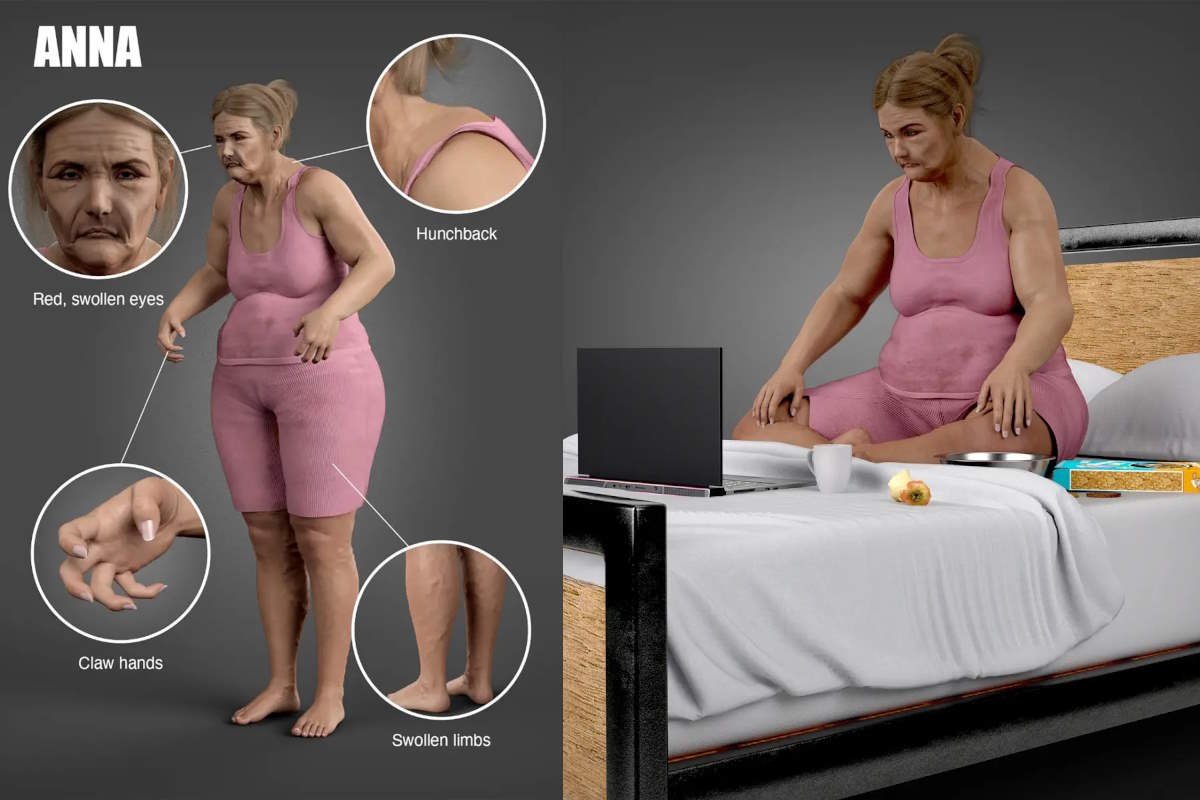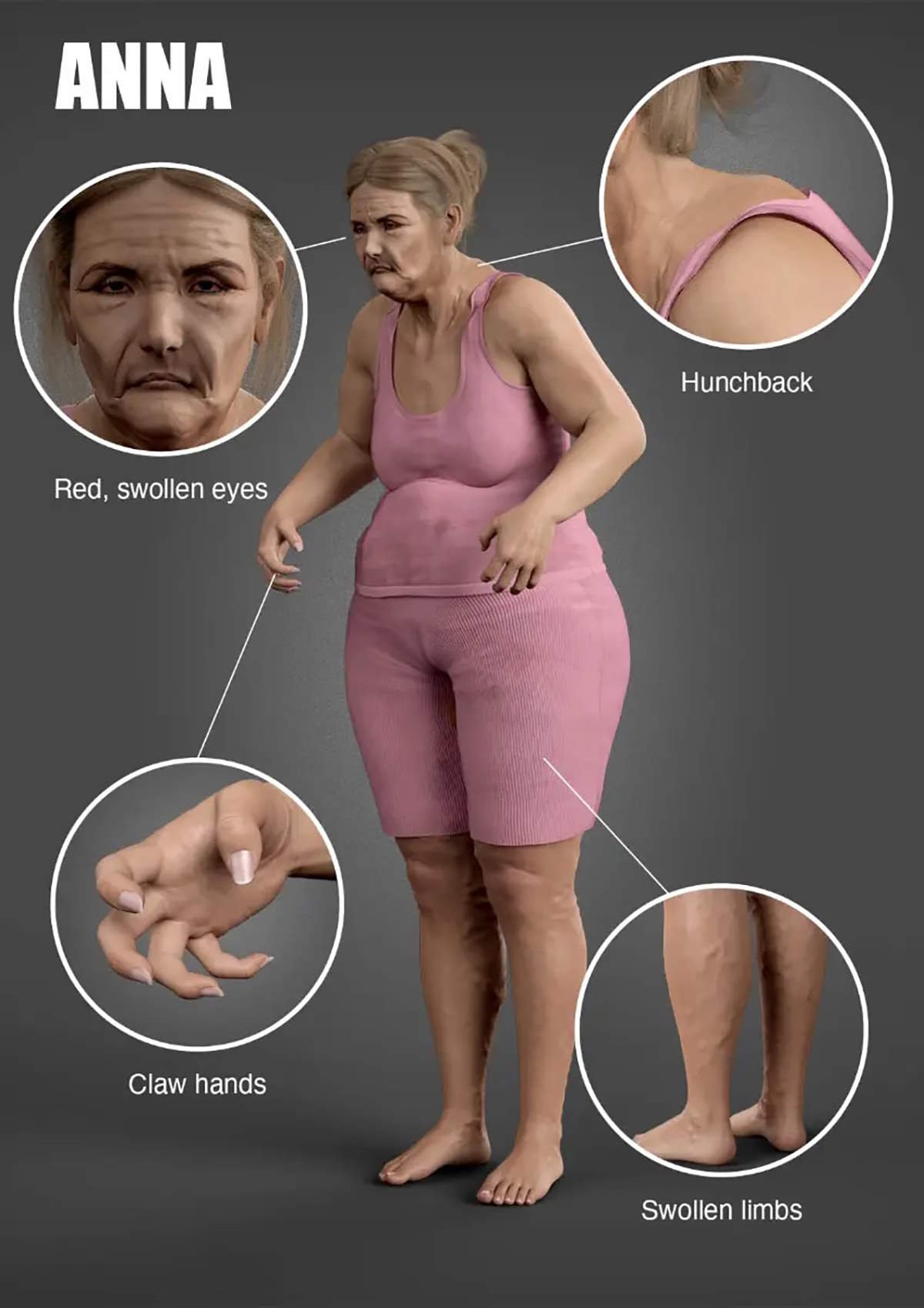Anche con il telelavoro non dobbiamo dimenticare di prenderci cura di noi. Ce lo ricorda ancora una volta un modello di come potrebbero diventare i telelavoratori nel 2100.
Dopo la pandemia, momento in cui è diventato “di moda”, il telelavoro è stato adottato da molte aziende per consentire ai propri dipendenti di raggiungere un migliore equilibrio tra lavoro e vita privata. Ma se da un lato lavorare da remoto offre una maggiore flessibilità ai dipendenti e una gestione del loro tempo più “personalizzabile”, dall’altro porta con sé anche ben altri problemi.
Non tutti hanno infatti a disposizione le sedie ergonomiche degli uffici, con i monitor predisposti alla giusta distanza e le scrivanie bilanciate in altezza in base alla propria statura. Così ci si improvvisa come si può, sul tavolo della cucina o sul divano.Tutti luoghi non adatti dove lavorare e che comportano una postura scorretta, cosa che a lungo andare è dannosa per il benessere del corpo umano.
Non ci resta dunque che chiederci come diventeremo tra qualche anno, quando ormai telelavoro e smart working saranno sdoganati. Ebbene, Furniture At Work, un’azienda specializzata in mobili per ufficio, se l’è chiesto e il risultato è piuttosto inquietante. Ha infatti presentato un modello spaventoso di come potrebbero apparire i telelavoratori nel 2100.
Gobba, occhi gonfi, sovrappeso, mani come artigli
Per l’occasione è stata scelta una donna, cui è stato dato il nome di Anna. La sua rappresentazione è impietosa: è gobba, ha gli occhi piccoli e gonfi, la parte superiore del corpo è chinata, è in sovrappeso perché troppo sedentaria e ha le mani che si chiudono come artigli come se stessero sempre stringendo un mouse.
Queste numerose caratteristiche fisiche potrebbero dipendere da un grosso numero di fattori. Potrebbero infatti essere causate da un’eccessiva esposizione agli schermi, da una cattiva postura lavorativa e da un maggiore utilizzo delle nuove tecnologie.
Questo modello è stato ideato in seguito a un’analisi condotta dall’Università di Leeds, che ha rivelato che circa un terzo dei telelavoratori in Inghilterra non dispone necessariamente di uno spazio di lavoro a casa specificamente dedicato al telelavoro, costringendoli a lavorare piegati su un divano o sdraiati su un letto.
Anna è chiaramente un modello sviluppato da un’azienda di mobili per l’ufficio a scopo chiaramente di marketing ed è stata colpita da diverse critiche tanto che il post sul blog del produttore è stato rimosso, ma ricorda molto Mindy, il prototipo 3D sviluppato invece da Toll Free Forwarding della futura ragazza degli anni 3000.
Non vuoi finire come Anna o Mindy? Allora ti ricordiamo che è fondamentale adottare misure per rimanere in buona salute anche se lavori da casa. Non dimenticare di fare pause regolari per permettere ai tuoi occhi di “staccare la spina” per un po’, una passeggiata durante la pausa pranzo e un po’ di stretching per evitare dolori al collo e alla schiena.
Condivido con voi grazie a @steemlinks gli articoli che mi colpiscono di più, se questo vi interessa lo trovate qui Greenme
Lo Smart Working sembra una gran figata ma se non è gestito al meglio si trasforma in un inferno!
Certo questo articolo estremizza forse le cose, però effettivamente quando lavoriamo da casa dovremmo ricavarci un piccolissimo spazio con tutte le comodità per lavorare, e fermarci e prenderci delle pause per staccare la spina!
Diciamo che dovremmo imparare a gestire non solo l'aspetto tecnico per migliorare la postura durante il lavoro, ma soprattutto la parte organizzativa e sociale.
Spero però che l'essere umano lavoratore in smart working sia abbastanza intelligente da non ridursi come ci mostrano le proiezioni del futuro, anche perchè lavorare da casa è anche una conquista con tanti vantaggi, sta a noi saperli sfruttare per migliorare la nostra vita!
Tantissime energie positive a tutti voi!
Grazie per il tempo dedicato a leggere il mio post.
ENGLISH VERSION
Even with telecommuting, we must not forget to take care of ourselves. We are once again reminded of this by a model of what remote workers might look like in 2100.
Since the pandemic, when it became 'fashionable', teleworking has been adopted by many companies to enable their employees to achieve a better work-life balance. But while working remotely offers employees greater flexibility and a more 'customisable' management of their time, it also brings with it other problems.
Not everyone has the ergonomic chairs of the office, with the monitors set at the right distance and the desks balanced in height according to their stature. **So you improvise as you can, at the kitchen table or on the sofa. **These are all unsuitable places to work and lead to poor posture, which in the long run is detrimental to the well-being of the human body.
All that remains for us to do is to wonder what we will be like in a few years time, when teleworking and smart working will have become customs-cleared. Well, Furniture At Work, a company specialising in office furniture, has asked itself this question and the result is rather disturbing. It has in fact presented a frightening model of what teleworkers might look like in the year 2100.
Gobba, swollen eyes, overweight, hands like claws.
A woman was chosen for the occasion and given the name Anna. Her depiction is merciless: she is hunched, her eyes are small and swollen, her upper body is bowed, she is overweight because she is too sedentary, and her hands close like claws as if they were always clutching a mouse.
These numerous physical characteristics could depend on a large number of factors. They could, in fact, be caused by excessive exposure to screens, poor working posture and increased use of new technologies.
This model was devised following an analysis conducted by the University of Leeds, which revealed that around one third of teleworkers in the UK do not necessarily have a workspace at home specifically dedicated to teleworking, forcing them to work hunched over a sofa or lying on a bed.
Anna is clearly a model developed by an office furniture company for clearly marketing purposes and has been met with so much criticism that the manufacturer's blog post has been removed, but it is very reminiscent of Mindy, the 3D prototype developed by Toll Free Forwarding of the future girl of the 3000s.
Don't want to end up like Anna or Mindy? Then let us remind you that it is essential to take measures to stay healthy even if you work from home. Don't forget to take regular breaks to allow your eyes to 'unplug' for a while, a walk during your lunch break and some stretching to avoid neck and back pain.
I share with you thanks to @steemlinks the articles that strike me the most, if this one interests you you can find it here Greenme
Smart Working sounds great but if it is not managed well it turns into hell!
Of course, this article maybe takes things to extremes, but actually when we work from home we should get a little space with all the comforts to work, and stop and take breaks to unplug!
Let's say that we should learn to manage not only the technical aspect to improve our posture while working, but especially the organisational and social part.
I hope, however, that the smart working human being will be smart enough not to shrink as the projections of the future show us, also because working from home is also an achievement with many advantages, it is up to us to know how to exploit them to improve our lives!
Much positive energy to you all!
Thank you for taking the time to read my post.


